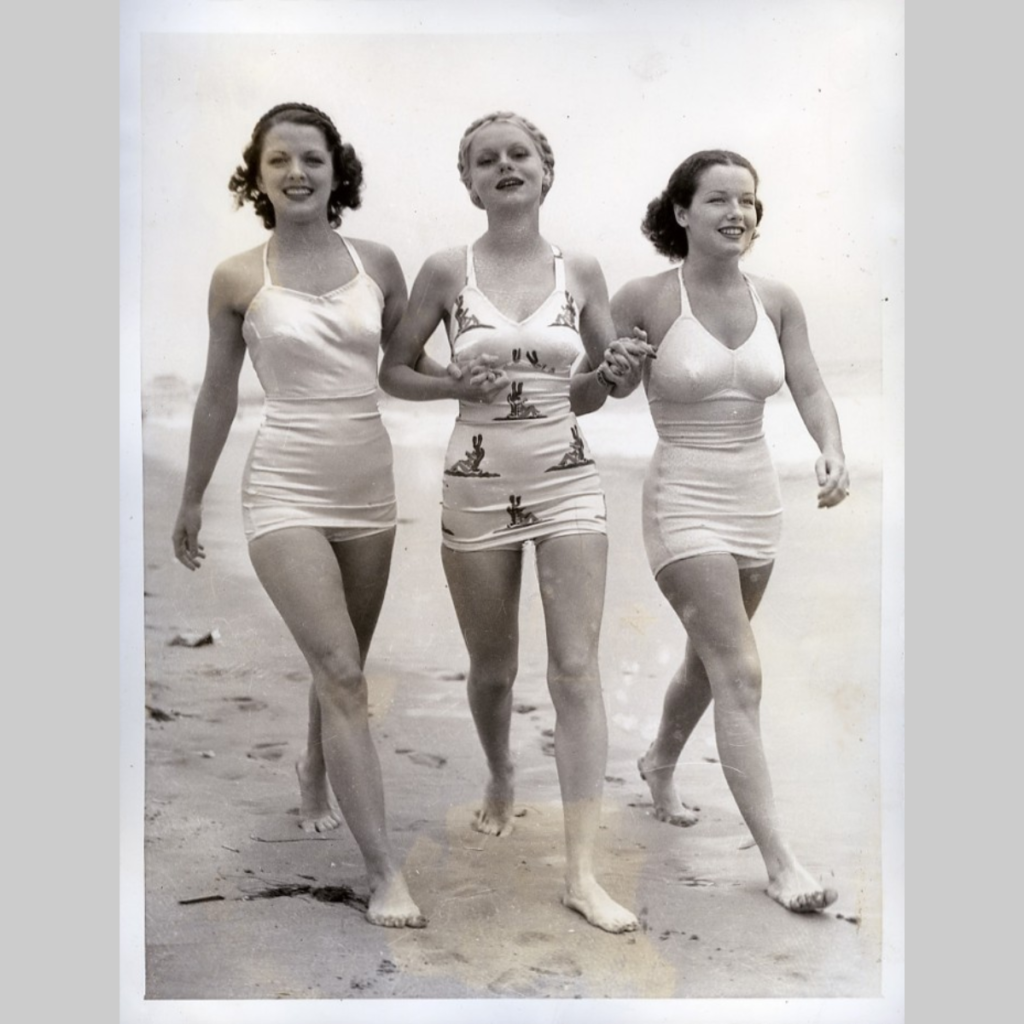
Swimming is a popular activity enjoyed by people of all ages and genders. However, the history of women’s bathing suits is a fascinating one. From the early 1800s to the present day, women’s swimwear has undergone a significant transformation. Exploring historical changes illustrates not only transformations in fashion but also a reflection of societal shifts, and celebrating the diverse expressions of women through the ages. In this blog post, the evolution of women’s bathing suits over the years is reviewed.

Evolution of Women’s Bathing Suits through the Ages
Each era had its own style and charm, showing us that fashion can change just like the tides. The evolution of women’s swimwear mirrors the ever-shifting trends and cultural influences.
1800s to 1900s: The Modest Era

In the early 1800s, women’s swimwear was quite different from what we see today. Women wore long dresses made of wool or flannel, which were heavy and cumbersome when wet. These dresses were often worn with stockings and shoes, making it difficult for women to move around in the water. However, as the century progressed, women’s swimwear began to change. By the early 1900s, bathing suits were made of wool or cotton, and they covered the entire body, including the arms and legs. These suits were often accessorized with a hat and shoes, and they were designed to be modest and functional.
1920s to 1940s: The Fashionable Era

In the 1920s, women’s swimwear underwent a significant change. Bathing suits became shorter and more form-fitting, and they were made of lighter materials such as silk and rayon. Women began to show more skin, and bathing suits became more fashionable. During World War II, women’s swimwear became more practical once again. Bathing suits were made of wool or cotton, and they were designed to be functional rather than fashionable. However, after the war ended, women’s swimwear began to change once again.
1960s to 1980s: The Daring Era
In the 1960s, women’s swimwear became more daring. Bikinis were introduced, and they quickly became popular. These two-piece swimsuits showed more skin than ever before, and they were designed to be fashionable and sexy. In the 1980s, women’s swimwear became more colorful and playful. Swimsuits were made of bright colors and bold patterns, and they were often accessorized with sunglasses and hats. High-cut swimsuits became popular, and they were designed to make women’s legs look longer.
2000s to Present Day: The Diverse Era

In the 2000s, women’s swimwear became more diverse. One-piece swimsuits became popular once again, and they were designed to be both fashionable and functional. Tankinis were also introduced, which were two-piece swimsuits that covered the stomach. Today, women’s swimwear is more diverse than ever before, and there are many different styles to choose from. Additionally, this era welcomed the introduction of reversible swimsuits, providing a quick style change with just a flip. Coverups also gained popularity, offering a stylish and practical way to transition from the water to other activities, making beach days even more versatile and fashionable.
Innovations in Fabric Technology of Bathing Suits
The history of women’s bathing suits is intricately tied to groundbreaking innovations in fabric technology. Over time, the shift from heavy wool and flannel to more modern materials like spandex and nylon has revolutionized the comfort and performance of swimwear. The introduction of quick-drying fabrics has addressed the age-old issue of soggy swimsuits, offering a practical solution for beachgoers and pool enthusiasts alike. These technological advancements not only enhance functionality but also allow for a wider range of styles and designs, shaping the contemporary landscape of women’s swimwear.
Sustainability in Swimwear
In an era marked by environmental awareness, sustainability has become a key player in the evolution of women’s swimwear. Designers are increasingly incorporating eco-friendly practices and materials into the creation of bathing suits. From the use of recycled fabrics to ethical production methods, the swimwear industry is adapting to meet the growing demand for environmentally conscious choices. The focus on sustainability extends beyond the material itself to encompass the entire lifecycle of the product. As consumers become more environmentally conscious, the push for sustainable swimwear reflects a broader commitment to reducing the ecological footprint of fashion.
Body Positivity Movement and Swimwear

In recent years, the body positivity movement has cast a transformative light on the fashion industry, and women’s swimwear is no exception. Designers are now embracing diverse body shapes and sizes, challenging traditional beauty standards. The movement has prompted a shift in the perception of beauty, influencing the creation of swimwear that celebrates every woman’s unique form. Inclusivity is at the forefront, with brands offering a variety of styles that cater to a spectrum of body types. The intersection of the body positivity movement and swimwear has not only altered the way women perceive themselves but has also significantly diversified the options available in the market.
The history of women’s bathing suits reflects a remarkable transformation over the years. From the long dresses of the 1800s to the bikinis of the 1960s, women’s swimwear has evolved to become more practical, fashionable, and diverse. Today, there are many different styles of swimwear to choose from, and there’s something for everyone. Whether someone prefers a one-piece swimsuit or a bikini, they can find a style that makes them feel comfortable and confident.